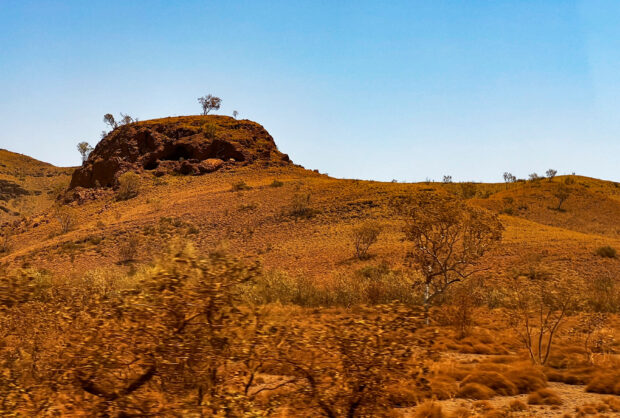
A rocky outcrop holds an Aboriginal shelter of significance in the Pilbara region of Western Australia where human habitation stretches back over 60,000 years, Gudai-darri, 1,120 kilometers (695 miles) northeast of Perth, Australia, October 19, 2023. REUTERS/Melanie Burton/File hoto
SYDNEY — Parts of Western Australia were gripped by an “extreme” heatwave on Saturday, raising the risk of bushfires in the vast state, the nation’s weather forecaster said.
The Bureau of Meteorology had an “extreme heat-wave warning” in place on Saturday for the remote Pilbara and Gascoyne areas of Australia’s largest state, warning temperatures there could hit high forties degrees Celsius over the weekend.
In the Pilbara mining town of Paraburdoo, about 1,500 km (930 miles) north of the state capital Perth, a maximum temperature of 47 degrees Celsius (116.6 degrees Fahrenheit) was forecast on Saturday, more than six degrees above the average January maximum, according to forecaster data. It was 42.7 C (108.8 F) there at 11:00 a.m. (0300 GMT).
Australia’s highest temperature on record of 50.7 C (123.2 F) was logged at the Pilbara’s Onslow Airport on January 13, 2022.
READ: Australia braces for heatwave, thunderstorms on New Year weekend
Saturday’s hot weather lifts the risk of bushfires in an already high-risk fire season amid an El Niño weather pattern, which is typically associated with extreme events such as wildfires, cyclones, and droughts.
“Very hot and dry conditions combined with fresh southerly winds and a fresh to strong west to southwesterly sea breeze will lead to elevated fire dangers on Saturday,” the weather forecaster said on its website, regarding part of the Pilbara.
READ: Australia swelters through ‘scorching’ heat lifting bushfire risk
The warning comes after hundreds of firefighters earlier this month battled an out-of-control bush fire near Perth amid soaring temperatures, prompting evacuations.
Australia’s last two fire seasons have been subdued compared with the 2019-2020 “Black Summer” of bush fires that destroyed an area the size of Turkey, killed 33 people, 3 billion animals and trillions of invertebrates.